Lavender Jones (aka Purple Jones)
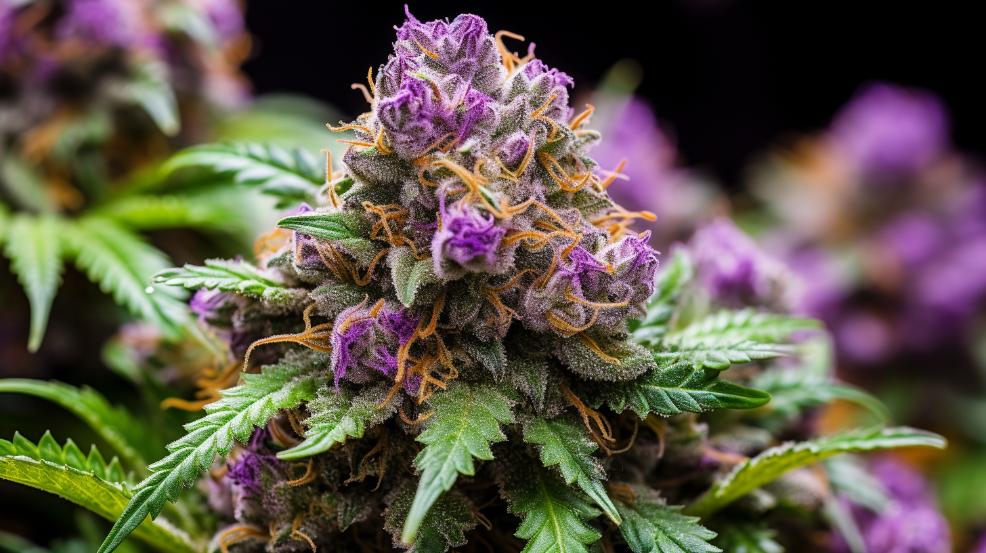
Lavender Jones, a sativa-dominant hybrid, emerges from an intriguing crossbreed of Purple Urkle and Casey Jones, presenting a unique interplay of genetics that promises a multifaceted influence on both mind and body. Characterized by a moderate THC level that typically ranges between 14% and 17%, it attracts attention not only for its vibrant, dense buds but also for its distinctive terpene profile that suggests a complex aromatic and flavor spectrum. As it holds potential benefits for both recreational enjoyment and therapeutic relief, particularly in the domains of stress, pain, and mood disorders, a deeper exploration into Lavender Jones could reveal further nuances of its effects and applications.
Key Takeaways
- Lavender Jones is a sativa-dominant hybrid, stemming from Purple Urkle and Casey Jones.
- It typically contains 14-17% THC, suitable for both recreational and therapeutic use.
- Prominent terpenes include Myrcene, Pinene, and Caryophyllene, enhancing its calming effects.
- Effective in managing chronic pain, stress, and muscle spasms through its cannabinoid and terpene profile.
- Grows best in a temperate Mediterranean climate, with an indoor flowering period of 8-9 weeks.
Genetic Lineage
Lavender Jones, a sativa-dominant hybrid, derives its unique characteristics from its parent strains, Purple Urkle and Casey Jones, combining dense, psychedelic buds with cerebral euphoria and relaxation. This particular genetic configuration showcases a meticulous blend of traits that enhance its cultivation and user experience. The influence of Casey Jones is particularly remarkable, as it contributes greatly to the strain’s ability to induce a profound sense of mental clarity and tranquility, making it ideal for daytime use.
The breeding process involved in developing Lavender Jones emphasizes a careful selection of phenotypes to enhance desired traits such as resilience and flowering time. The dominance of sativa from Casey Jones ensures vigorous growth and extends the flowering period, requiring careful monitoring and control of environmental factors such as light, temperature, and humidity to optimize phenotypic expression.
The dense bud structure inherited from Purple Urkle manifests in tightly packed, vibrant-hued flowers that display a range of colors from deep purples to lush greens, accentuated by fiery orange pistils. This complexity not only appeals aesthetically but also plays a key role in the synthesis of terpenes, contributing to the strain’s distinctive aromatic profile and therapeutic properties.
THC/CBD Content
Understanding the chemical makeup of Lavender Jones, the strain exhibits a THC content typically ranging from 14-17%, making it a moderately potent option for both novice and experienced users. This sativa-dominant hybrid, also referred to as Purple Jones due to its vibrant coloration, offers a balanced cannabinoid profile that enhances its therapeutic potential. The THC concentration is pivotal in delivering its noted effects on alleviating conditions such as chronic pain, inflammation, and muscle spasms. The moderate THC level also guarantees that the effects, while potent, are not overwhelming, maintaining a smooth and functional high that supports creativity and stress relief.
In cultivation terms, the consistency of THC levels in Lavender Jones can be attributed to its genetic stability and the controlled growing environments that optimize cannabinoid production. This specific range of THC supports an ideal balance between providing sufficient psychoactivity to induce relaxation and maintaining clarity of mind. Cultivators of Lavender Jones aim to achieve this cannabinoid balance, making it a preferred choice among users seeking a therapeutic but manageable experience. The strain’s chemical profile is reflective of its genetic lineage, which combines robust phenotypic traits with resilient cultivation characteristics.
Terpene Profile
The terpene profile of Lavender Jones is distinguished by the presence of Myrcene, Pinene, and Caryophyllene, each contributing uniquely to the strain’s aroma, flavor, and therapeutic effects. Myrcene, the most abundant terpene in this strain, is primarily responsible for the deeply relaxing and sometimes sedative effects. Its earthy and musky notes are foundational in crafting the strain’s soothing aroma.
Pinene, on the other hand, offers a sharp contrast with its invigorating pine scent, which complements the calming yet slightly energetic undertones. This terpene is often associated with enhancing alertness and counteracting some of the more tranquil effects of Myrcene.
Caryophyllene introduces a spicy and peppery layer to the bouquet, balancing the soothing and energizing properties inherent in Lavender Jones. Its unique chemical structure also contributes to its potential gastrointestinal and anti-inflammatory benefits, making it a significant component in the holistic efficacy of this strain.
| Terpene | Aroma | Effects |
|---|---|---|
| Myrcene | Earthy, musky | Relaxing, sedative |
| Pinene | Pine | Calming, energetic |
| Caryophyllene | Spicy, peppery | Soothing, balancing |
This robust terpene profile enhances the overall sensory and therapeutic experience of Lavender Jones, making it a popular choice among connoisseurs and therapeutic users alike.
Effects
Effects of the Lavender Jones strain mostly revolve around its ability to induce profound relaxation and elevate mood, with notable attributes that also include potential arousal enhancement. As an indica-dominant hybrid, Lavender Jones leverages its genetic lineage, which includes Purple Urkle, to offer a diverse profile of effects that cater to both recreational and therapeutic needs, without focusing extensively on explicit medical applications.
-
Relaxation: Lavender Jones primarily triggers a deep state of relaxation, making it suitable for unwinding after a long day. The relaxation is inclusive, affecting both the mind and body, and is attributed to the high THC content and the synergistic effects of its terpene profile.
-
Mood Elevation: Users frequently experience an uplift in mood. This effect can be attributed to the strain’s ability to modulate neurotransmitter release, thereby enhancing feelings of well-being and happiness.
-
Arousal Enhancement: There is a noticeable increase in arousal, which many users find beneficial for enhancing intimacy. This is possibly linked to the strain’s ability to reduce anxiety and inhibition, thereby promoting a more relaxed and open state.
-
Energizing Effects: Despite its relaxing properties, Lavender Jones can also provide a mild energizing effect, making it a favored choice for daytime use among those seeking balanced hybrid effects. This dual-action is particularly valued by those who wish to remain active and engaged in their activities.
Medical Uses
While Lavender Jones is celebrated for its recreational benefits, its medicinal properties are equally notable, particularly in the management of chronic pain, inflammation, stress, and muscle spasms. The strain’s THC content, which typically ranges from 14% to 17%, is vital in its ability to deliver therapeutic effects. This cannabinoid profile facilitates a modulation of pain signals and inflammatory responses within the body, making it an effective option for patients suffering from chronic conditions that cause pain and swelling.
Furthermore, the psychoactive components of Lavender Jones interact with the body’s endocannabinoid system to promote a state of relaxation and decrease in muscle tension, which is particularly beneficial for individuals experiencing muscle spasms. The strain’s balanced effects also support its use during daytime hours, providing relief without overwhelming sedation. This makes Lavender Jones a practical choice for those who require symptom relief but also need to maintain functionality in their daily tasks.
Medical users of Lavender Jones often report a significant reduction in stress levels, attributing this to the strain’s calming properties. This stress relief is not only beneficial for general wellbeing but also assists in the holistic management of health, where stress exacerbates other symptoms.
Flavor and Aroma
Exploring the sensory aspects of Lavender Jones, the strain exudes a sweet, tangy orange peel aroma complemented by herbal lavender and sage scents. This fragrant fruit bouquet is further enriched by the subtle undertones of grape candy, enhancing the strain’s aromatic complexity. The flavor profile is equally sophisticated, marked by a harmonious blend of sweetness and herbal notes.
The distinct sensory characteristics of Lavender Jones can be attributed to its rich terpene profile, which includes:
- Myrcene: This terpene contributes to the strain’s overall relaxing effects and adds to the earthy undertones in both aroma and flavor.
- Pinene: Known for its calming properties, pinene adds a layer of sharpness to the sweet citrus aroma, enhancing the overall freshness of the scent.
- Caryophyllene: It balances the soothing and energizing aspects of Lavender Jones, adding a spicy edge to the flavor that complements the sweet and herbal notes.
- Complex Flavor Layers: The interaction of these terpenes results in a multifaceted flavor experience, characterized by an initial citrus sweetness followed by an earthy, herbal aftertaste that lingers.
This intricate blend not only delights the senses but also underscores the strain’s unique cultivation characteristics.
Appearance
The Lavender Jones strain exhibits visually striking buds that are dense and vibrant, reflecting its Purple Urkle heritage with psychedelic hues. The buds display a rich amalgamation of colors, primarily featuring shades of deep purple intermingled with vibrant greens. This chromatic vibrancy is a direct genetic inheritance from the Purple Urkle, renowned for its visually appealing purple coloring.
The surface of Lavender Jones buds is generously adorned with trichomes, giving them a frosty appearance that suggests high cannabinoid content. These trichomes not only contribute to the aesthetic appeal but also to the potency of the strain. The dense structure of the buds hints at the careful cultivation practices typically required to optimize their development and cannabinoid profile.
Moreover, the purple hues in Lavender Jones are more than just visually pleasing; they indicate the presence of anthocyanins, flavonoid compounds that may have therapeutic properties. The meticulous cure of these buds enhances their coloration, making them not only a treat for the eyes but also potentially beneficial for medicinal users seeking the combined effects of THC and various flavonoids.
Grow Information
Lavender Jones strain adapts well to both indoor and outdoor environments, necessitating specific cultivation practices to optimize growth and bud quality. This strain, known for its dense bud structure, requires careful attention to environmental conditions to flourish.
Ideal growing conditions include:
-
Climate: Lavender Jones thrives best in a temperate Mediterranean climate. It’s important to maintain moderate temperatures and low humidity levels to mimic this environment, especially when cultivating indoors.
-
Flowering Time: Indoors, the strain has a flowering period of approximately 8-9 weeks. Timing is critical to ensure the buds develop fully, enhancing their aromatic profile and resin production.
-
Harvest Period: When grown outdoors, the best time to harvest is from late September to early October. This timing helps avoid the risks associated with early frosts or excessive rainfall, which can detrimentally affect the dense bud structure and potency.
-
Lighting: Adequate lighting is essential for maximizing growth and bud quality. Indoor setups should utilize high-intensity discharge lamps, making sure that plants receive enough light without overheating.
Adverse Effects
While generally well-tolerated, Lavender Jones can cause adverse reactions such as anxiety and paranoia in some users. Despite its widespread acclaim for inducing relaxation and a soothing experience, the strain has been noted to elicit less desirable effects under certain conditions. Such reactions are largely contingent upon the individual’s physiological response to the cannabinoids present in Lavender Jones.
Scientific analysis suggests that the terpene profile of Lavender Jones, rich in linalool, could paradoxically contribute to both its calming effects and the onset of anxiety in sensitive individuals. This dual potential highlights the complex interaction between terpenes and cannabinoids within this specific strain. Additionally, users frequently report symptoms of dry mouth, a common side effect associated with many cannabis strains due to their impact on salivary secretion.
Here is a detailed breakdown of the adverse effects associated with Lavender Jones:
| Adverse Effect | Description |
|---|---|
| Anxiety | Heightened feelings of unease and nervousness |
| Paranoia | Irrational and excessive suspicion |
| Dry Mouth | Decreased salivation leading to a dry sensation |
Users should consider these potential adverse effects when opting for Lavender Jones, particularly those prone to anxiety or paranoia.
Comparisons with Similar Strains
Several strains similar to Lavender Jones, such as Purple Urkle and Casey Jones, offer comparable therapeutic benefits, including relaxation and stress relief, while also presenting a unique terpene profile and cannabinoid composition. These strains, derived from a rich lineage, contribute extensively to the diverse therapeutic landscape of cannabis offerings.
Each strain, while sharing a core of beneficial effects, distinguishes itself through specific characteristics:
-
Purple Urkle: Known for its deep sedative effects, Purple Urkle is primarily indica and features a rich, grape-like aroma. Its terpene profile is dominated by myrcene, which contributes to its powerful relaxing properties, ideal for nighttime use.
-
Casey Jones: A sativa-dominant hybrid, Casey Jones is energizing, fostering creativity and alertness. It combines a high THC content with a complex terpene blend, including limonene, which uplifts mood and provides stress relief.
-
Cannabinoid Composition: While Lavender Jones typically exhibits a balanced THC to CBD ratio, enhancing both euphoria and relaxation without overwhelming sedation, its relatives might lean more heavily on either the THC or CBD side, affecting potency and therapeutic application.
-
Cultivation Focus: Lavender Jones and its kin are cultivated with specific environmental controls to enhance their unique characteristics, such as humidity levels and lighting, which directly influence their terpene profiles and potency.
Understanding these comparisons helps in choosing the right Jones strain or its relatives based on individual needs and desired effects.
Research and Studies
To further illuminate the efficacy of Lavender Jones, recent studies have focused on its pharmacological impacts, particularly in the areas of chronic pain and stress alleviation. Research underscores the importance of the strain’s biochemical profile, which includes a THC concentration typically ranging between 14-17%. This cannabinoid potency is vital in modulating pain signaling pathways and reducing inflammation, which are pivotal points to consider in the management of chronic pain conditions. Additionally, the presence of specific terpenes that contribute to its distinctive sweet floral aroma with grape undertones appears to enhance the therapeutic effects, promoting relaxation and mitigating muscle spasms.
Detailed analyses also suggest that the anxiolytic properties of Lavender Jones may stem from its sativa-dominant genetic composition, which encourages a calm yet alert mental state, conducive to stress relief and boosted creativity. These studies contribute significantly to the understanding of strain-specific responses, providing a foundation for more personalized medicinal cannabis use. As research progresses, the cultivation of Lavender Jones is increasingly tailored to maximize these beneficial pharmacological properties, ensuring consistent quality and efficacy in clinical applications.
History and Origin
Lavender Jones, a sativa-dominant hybrid, emerges from a rich lineage that combines the robust characteristics of Purple Urkle and the uplifting effects of Casey Jones. This unique blend results in a strain that is appreciated for its balanced effects and moderate average THC level, typically around 15.5%. Lavender Jones is cultivated to harness the best attributes from its parent strains:
-
Genetic Backbone: The Purple Urkle component contributes dense, vibrantly colored buds, known for their deep hues and rich cannabinoid profile.
-
Euphoric Influence: From Casey Jones, Lavender Jones inherits a cerebral euphoria that aids in stress relief and promotes relaxation, enhancing the strain’s appeal for daytime use.
-
Balanced Effects: The hybridization process aims to create a balance between indica and sativa effects, making Lavender Jones potent yet approachable for both novice and experienced users.
-
Therapeutic Potential: Its well-rounded effects are effective in combating anxiety, stress, and physical tension, making it a favored choice for therapeutic applications.
This strain’s cultivation focuses on maximizing the expression of these traits, ensuring a consistent, high-quality product that leverages its storied genetic heritage.
Frequently Asked Questions
Is Lavender Jones Indica or Sativa?
Lavender Jones is primarily an indica-dominant hybrid, with a genetic background comprising 40% indica and 60% sativa. This balance offers a blend of relaxation and mild energy, ideal for various therapeutic applications.
Is Lavender a Sativa or Indica?
Lavender, in the context of plant genetics, generally refers to a genus of flowering plants in the mint family, not specifically classified under cannabis indica or sativa categories which pertain to marijuana strains.
What Is the Best Strain to Get You High?
The best strain for achieving a high varies due to individual tolerance and preference, emphasizing the importance of exploring strains with diverse THC levels and terpene profiles to match desired effects.
What Is the Strongest Indica Sativa?
The strongest indica-sativa hybrid typically balances potent effects with high THC content. These hybrids are cultivated to enhance specific traits, offering a combination of relaxation and mental stimulation, suitable for various therapeutic applications.

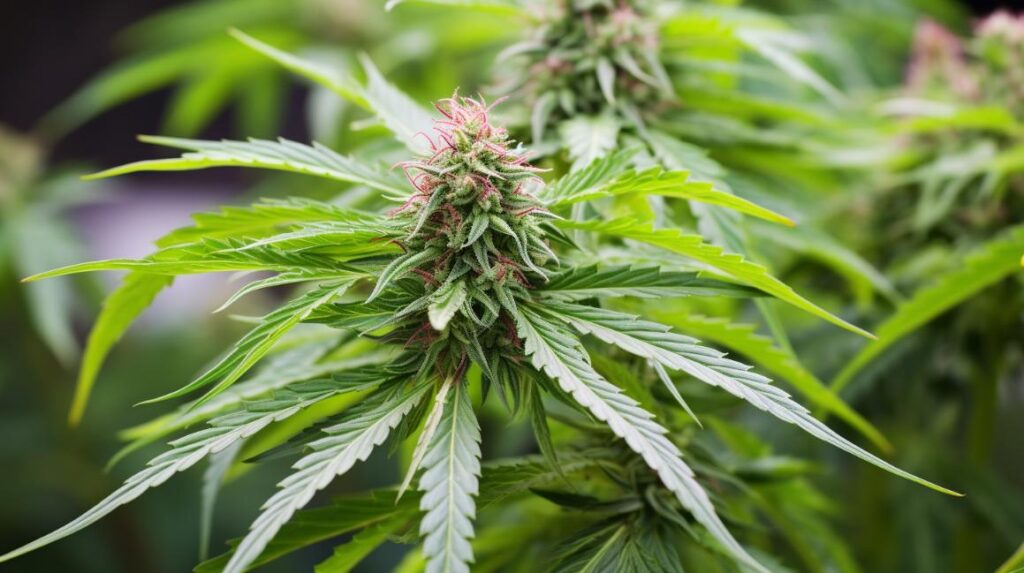
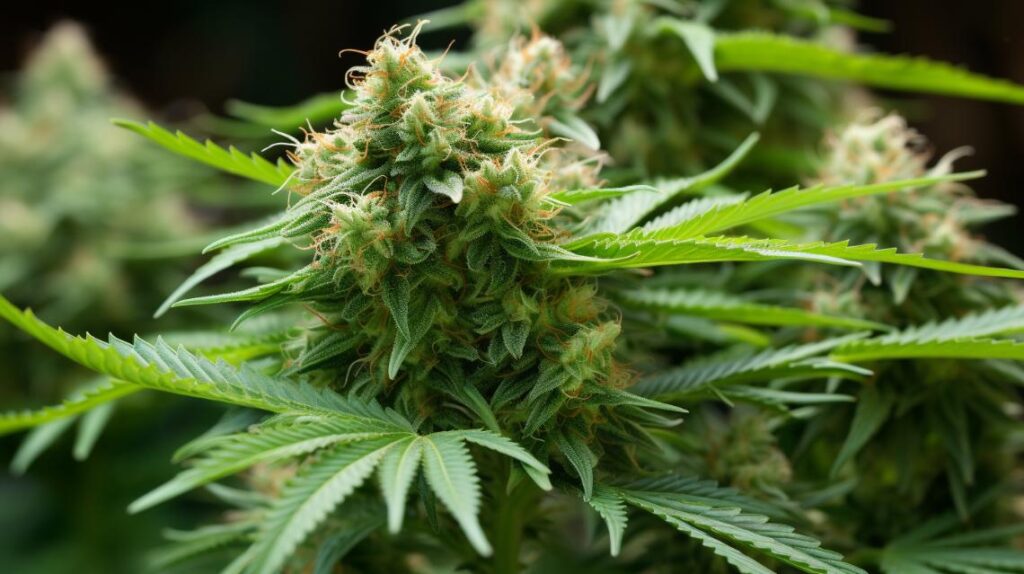

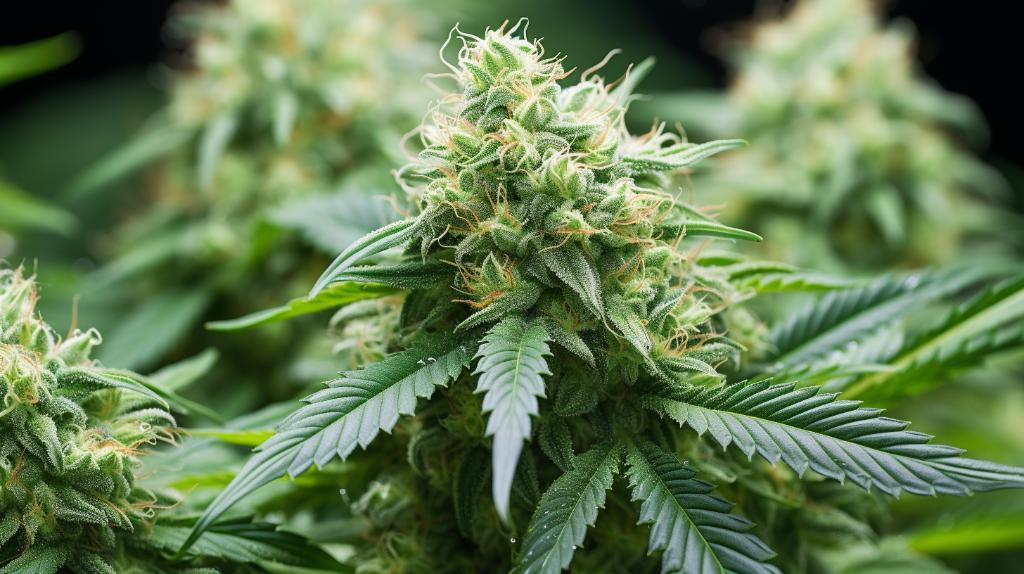
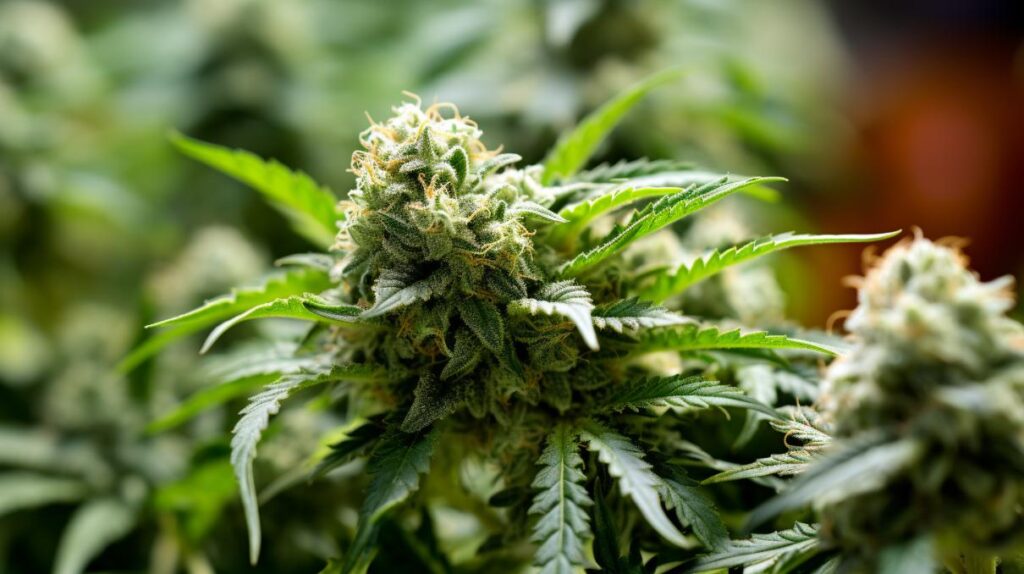

Responses